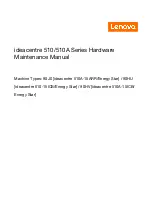
3-1
EATON
Powerware
®
9390 Integrated Battery Cabinet (Models IBC-S and IBC-L) Installation Manual
S
164201536 Rev D
www.eaton.com/powerquality
Chapter 3
Installing Battery Cabinets
3.1 Preliminary Installation Information
W
A
R
N
I
N
G
The installation of battery cabinets should be performed or supervised by personnel
knowledgeable of batteries and their associated precautions. Keep unauthorized personnel
away from battery cabinets.
Observe these precautions when working on or around battery cabinets:
A
Remove watches, rings, or other metal objects.
A
Use tools with insulated handles.
A
Wear rubber gloves and boots.
A
Do not lay tools or metal parts on top of batteries or battery cabinets.
Refer to the following while installing the battery system:
A
See Appendix A for installation drawings and additional installation notes.
A
Refer to the appropriate Powerware 9390 UPS Installation and Operation Manual, as
referenced in paragraph 1.6, for UPS cabinet conduit and terminal locations, and
terminal specifications.
A
Dimensions in this manual are in millimeters and inches.
A
Do not tilt the cabinets more than
"
10° during installation.
A
The conduit landing plates are to be removed to add conduit landing holes as required.
Plate material is 16 gauge steel (1.5 mm/0.06
I
thick).
A
The cabinets must be installed on a level floor suitable for computer or electronic
equipment.
A
See Table A on page A-4 for equipment weight and point loading.
A
A
The Environmental Monitoring Probe, for remote monitoring of battery environmental
conditions, must be installed and setup by an authorized Powerware Customer Service
Engineer, or the extended battery warranty terms, as specified on page W-1, will be void.
A
Once the battery cabinets are installed and wired, return to the appropriate Powerware
9390 UPS Installation and Operation Manual, as referenced in paragraph 1.6, to
complete the UPS wiring.
















































